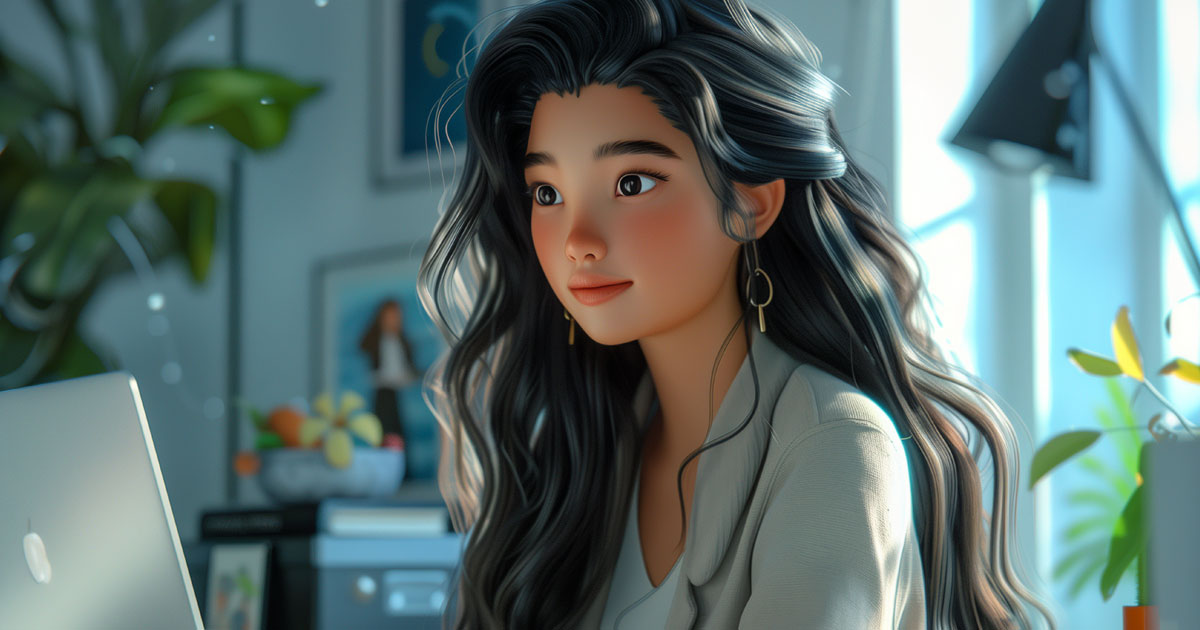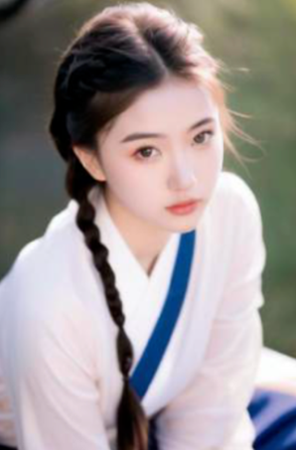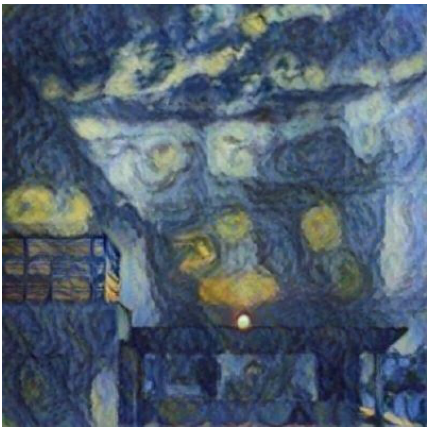Exploring copyright protection for AI-generated works in Asia: revolutionary future or legal chaos?
Will generative AI be orderly progress or a copyright battlefield? Here is a deep dive into the topic by two experts from the REVERA law group, head of arbitration & IT disputes subpractice Kamal Tserakhau and associate Andrei Rutkouski.

Image of a woman generated using Midjourney 6 (Credit: Freepik)

Kamal Tserakhau (left), Andrei Rutkouski (right)
Generative AI technologies have burst onto the scene at breakneck speed, promising revolutionary changes across many business sectors. However, along with the potential for increased efficiency, they have brought a host of legal questions that remain unanswered. One of the most pressing is whether materials created by AI should be protected by copyright on an equal footing with human-created works.
While lawyers around the world debate the finer points of this issue, leading Asian powers have already staked out positions, such as how many prompts one should submit in order to enjoy copyright protection over AI-generated works?
Below is our overview of the finely nuanced approaches unfolding in different countries.
Mainland China
Mainland China, one of the world’s largest and fast-growing markets, appeared one of the first to state its position in relation to protection of the AI-generated materials by copyright.
In the recent landmark Li Yunkai v. Liu Yuanchun case, the Chinese court was to decide whether a copyright infringement claim based on an AI-generated image shall be valid under Chinese law.
The two main issues considered by the court were:
1. Whether AI-generated images may be subject to copyright protection?
Evaluating copyrightability of a certain element under Chinese law is generally based on the following issues:
- Whether the work is in the field of literature, art, or science;
- Whether the following are present: originality, tangible expression; and intellectual contribution.
The main dispute arose around the “originality” criteria, which is generally linked to human authorship.
The court concluded that the AI-generated image was subject to copyright protection due to claimant making 150+ prompts determining the layout, composition and specific parameters of the image. Such an iterative process constituted claimant’s aesthetic choices and subjective decisions, reinforcing the presence of “originality” in the image.
It is noteworthy that a similar question of copyrightability of works created with assistance of AI-system was also considered in the Tencent v. Yingxun case, where the Chinese court established that article created with assistance of AI possessed originality and shall be subject to copyright protection.
2. Who shall be considered as an author of such AI-generated image?
The decision in Li Yunkai v. Liu Yuanchun case became the first to recognize user of the generative AI as an author of the generated image under Chinese law due to its creative and authentic input to creation of the work in question.

“Spring Breeze Brings Tenderness,” the disputed image in the Li Yunkai v. Liu Yuanchun case
In the aforementioned Tencent v. Yingxun case, Tencent was both the developer and user of the AI tool, therefore, the court simply named Tencent as the author of the generated work without detailed analysis.
To summarize, the Chinese courts are eager to recognize copyright ownership in AI-generated materials, considering AI-systems as a mere tool to support and substantiate humans’ creative ideas. Moreover, authorship in such AI-generated materials is generally owned by users of the AI-systems making authentic input managing AI operation.
At the same time, Chinese courts emphasize that copyrightability of AI-generated materials remains case-specific endeavor and conclusions made should not be generalized.
Japan
Japan’s authorities decided to publicly clarify their approach to development and use of AI systems, also covering the issue of copyright protection of AI-generated materials.
On January 23, 2024, the Ministry of Internal Affairs and Communications and the Ministry of Economy, Trade and Industry issued the “Draft AI Guidelines for Businesses.” These guidelines cover developers, providers, and users of AI in business and government. Users for non-business activities are excluded. One of the issues covered by the Guidelines is copyrightability of the AI outputs and interpretation of the Japan’s copyright law with regards to AI-generated materials.
Article 2(1) of the Japan’s Copyright Act defines a copyrightable work as a creation expressing “human thoughts and emotions.” Taking into account this wording, it appears that AI-generated works are hardly could be protected by copyright. However, the Guideline clarifies that a joint work with human input and AI-generated output may, in some cases, be eligible for copyright protection based on the following factors:
- The amount and content of the instructions and input prompts by the AI user;
- The number of generation attempts, modifying the output for a desired result by the AI user;
- The AI user selecting the work from multiple generated works;
- The subsequent human modifications to the AI generated work.
To summarize, it is highly likely that AI-generated materials may only be eligible for copyright protection if there is a significant creative and authentic input made by a human which determined the main aspects of the generated material. In such cases, user of the AI-system who made such input will be considered the author and copyright owner of the AI-generated material.
India
The issue of copyright protection for AI-generated works remains a hot topic in India for the last several years, generating uncertainty and controversial opinions.
The Indian Copyright Act 1957 does not explicitly address the issues around AI-generated content. However, Section 2(d)(vi)[iv] of the Act specifies that for computer-generated works, the person causing the work to be created is considered to be the author. This provision could potentially apply to AI-generated works, but the Indian case law with regard to AI remains uncertain.
In 2020, an individual Ankit Sahni applied for registration of copyright to a “2-D artwork” titled “Suryast” created by RAGHAV, an AI-based tool that generates artistic works. In the application, Mr. Sahni designated himself and RAGHAV as co-authors, claiming that the contributions of the AI tool were distinct and independent from his own.

Suryast
The application was initially rejected for lacking a human author, however, in November 2020 the Indian Copyright Office surprisingly granted protection to the “Suryast” image, with Mr. Sahni and RAGHAV AI tool indicated as co-authors. This made Ankit Sahni the first person to have secured copyright protection for AI-generated content.
However, the Indian Copyright Office subsequently issued a withdrawal notice, asking Mr. Sahni to provide further information regarding the legal status of the AI tool RAGHAV. After Mr. Sahni’s response, no action has been taken, and the work is still listed in the copyright registry.
Rendering protection to AI-generated image with AI designated as co-author will go a long way in recognising and protecting the interests of AI-businesses, and will ensure that they are appropriately incentivized.
Revera’s conclusions and recommendations
The copyright protection of AI-generated works remains an unsettled and complex issue across major Asian jurisdictions. While Chinese courts have recognized copyright in AI-generated images when there is significant human input and direction of the AI system, Japan is more reserved and requires examining the extent of human creative involvement on a case-by-case basis. India’s stance is still uncertain after granting and then rescinding copyright registration for an AI-generated artwork designating the AI as a co-author.
Overall, as AI capabilities rapidly advance, Asian countries are grappling with how to adapt existing copyright frameworks to appropriately incentivize human inventors while not granting overreaching rights to AI systems themselves. This evolving legal landscape requires careful monitoring by businesses operating in the AI space across the region.
